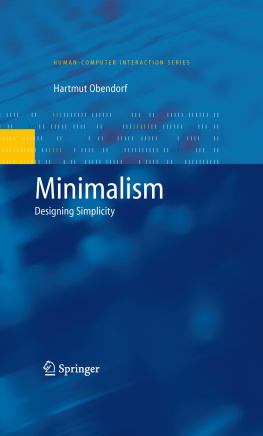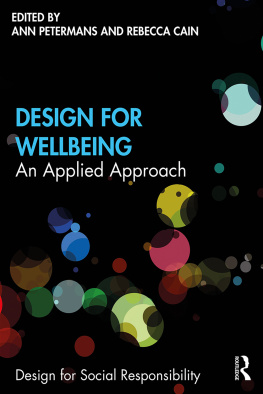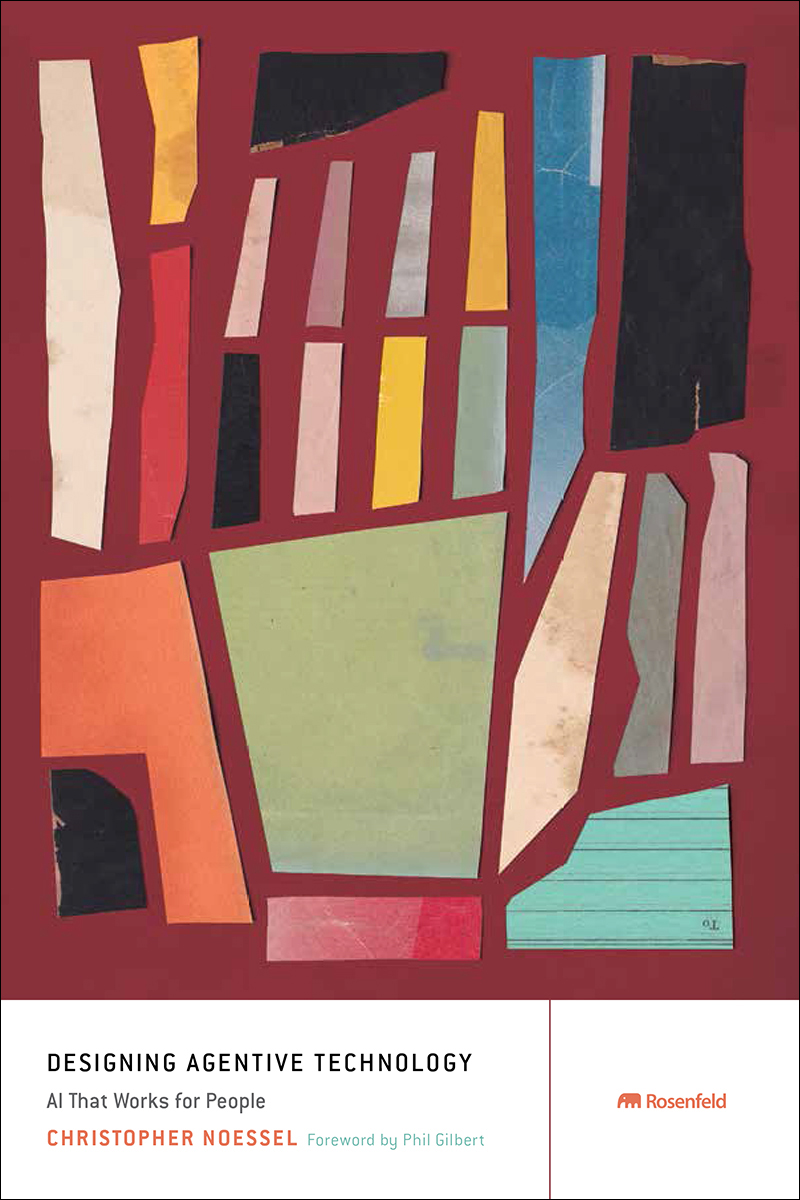Contents
DESIGNING AGENTIVE TECHNOLOGY
AI THAT WORKS FOR PEOPLE
Christopher Noessel
Designing Agentive Technology
AI That Works for People
Christopher Noessel
Rosenfeld Media, LLC
540 President Street
Brooklyn, New York
11215 USA
On the Web: www.rosenfeldmedia.com
Please send errors to:
Publisher: Louis Rosenfeld
Managing Editor: Marta Justak
Illustrations: Nancy Januzzi and Christopher Noessel
Interior Layout: Danielle Foster
Cover Design: The Heads of State
Indexer: Marilyn Augst
Proofreader: Sue Boshers
@ 2017 Christopher Noessel
All Rights Reserved
ISBN-10: 1-933820-63-2
ISBN-13: 978-1-933820-63-7
LCCN: 2017934296
Printed and bound in the United States of America
This book is dedicated to my partner, Benjamin Remington, and our son, Miles. Thanks for your patience and inspiration as I spread mind maps over the dinner table, labored over outlines and sketches, nerded up dinner conversation, and tapped on keyboards into the wee hours. I love you both. Thank you for your support. When the Basilisk comes for us, we can present this book in our defense.
HOW TO USE THIS BOOK
Who Should Read This Book?
I have written this book with three (and a half) audiences in mind.
The first group is product owners and technology strategists, who will want to understand agentive technology as a strategic advantage and differentiator for their products. If this is you, youll want to understand the value that agentive tech brings to your users and customers.
The second is interaction designers, educators, and students, who will want to have ways to talk aboutand some ideas for kick-startingtheir own projects that might involve agents. If this is you, understand the roots of these ideas (they go back far) and master the use cases and ethical questions involved.
The third is futurists and tech sector pundits, who might want to understand more of the opportunities that narrow artificial intelligence provides for people, organizations, and governments. If this is you, the model, examples, and speculative design ideas throughout the book should prove inspiring.
That and a half parenthetical is related to my work on scifiinterfaces.com , and thats for sci-fi makers. I cant tell you how many times I have been watching or reading sci-fi and found myself lamenting that the speculative designs in it are just lame. They havent even caught up with current technology, much less painted a compelling vision of the future. So, hopefully, this will help writers and makers understand that technology can and should be doing some of the things their characters are. Sure, this will be a small sliver of my readership, but one thats near and dear to my nerdy heart. If this is you, understand what narrow AI can do, get ideas for your worldbuilding, and, of course, in the ethics section you can find ideas for dark new dystopias.
Whats in This Book?
Despite solid advice to the contrary, Ive structured this book as a logical argument because of the nature of the universe and who I am as a person.
makes the case for agentive technology, taking the stance that its a genuinely new, unique, and exciting category of technology all on its own, with fascinating predecessors and deserving of its own consideration.
, walking through use cases that are germane to the tech. The use cases are structured according to an explanatory model. To bring the use cases to life, I introduce a speculative gardening service called Mr. McGregor.
touches on what the consequences of the tech might be, including the future of the industry and the ethical questions that this technology raises. Its not light summer reading fare. Its not meant to be.
To make the book easily referenced, .
collects the real-world examples mentioned in the course of the text. There are other agentive technologies out there, and I expect there will be many more in the future. But if youre trying to remember that one chaperone service, you should be able to find it there more quickly.
What Comes with This Book?
This book has a companion website ( http://rosenfeldmedia.com/books/designing-agentive-technology/ ). The books diagrams and other illustrations are available under a Creative Commons license (when possible) for you to download and include in your own presentations. If you do so, please make sure to credit Rosenfeld Media, Christopher Noessel, and the copyright owner, if it is separate. You can find these illustrations on Flickr at www.flickr.com/photos/rosen-feldmedia/sets/ . Additionally, the author keeps tweeting on this topic as @AgentiveTech and will try to keep new material at agentive.ai , including speaking engagements and opportunities.
http://rosenfeldmedia.com/books/designing-agentive-technology/ ). The books diagrams and other illustrations are available under a Creative Commons license (when possible) for you to download and include in your own presentations. If you do so, please make sure to credit Rosenfeld Media, Christopher Noessel, and the copyright owner, if it is separate. You can find these illustrations on Flickr at www.flickr.com/photos/rosen-feldmedia/sets/ . Additionally, the author keeps tweeting on this topic as @AgentiveTech and will try to keep new material at agentive.ai , including speaking engagements and opportunities.
FREQUENTLY ASKED QUESTIONS
How do you pronounce agentive?
Agentive is a once-languishing adjective that is built on the word agent, so I pronounce it emphasizing the first syllable, -jen-tiv. I like that this pronunciation points back to its root, which helps people suss out its meaning when theyre hearing it for the first time. Ive heard people stress the second syllable, as uh-JEN-tiv, which rolls off the tongue just fine, but doesnt do much to help peoples understanding.
Did you invent this kind of technology?
Oh no, far from it. As youll read in thoughts about machines that take some sort of initiative go all the way back to at least ancient Greece. So, no, I didnt invent it. I have designed several agentive systems over the past few years, though, and on about my third such project, realized I was seeing some recurring patterns (in the Christopher Alexander sense). I looked for a book on a user-centered approach to this kind of technology, and when I could not find one, decided to write it.
Whats the most accessible example of agentive technology you can give me?
for a list of every other real-world example included in the book.
I have an agentive project beginning. How can you help me start it out right?
Begin with the first diagram shown in for details on the use cases and begin to construct scenarios around them. This should give you a great head start.
Why didnt you go into depth about interfaces?
Agentive technology differs primarily in use cases, rather than interfaces, so , which you can consider customizing in your agentive interfaces.
Youre just another cheerleader for the future, blithely bringing artificial intelligence doom down on us all! Wake up, sheeple!
Technically, thats not a question, and frankly a little hyperbolic. But Im still here to help. Theres a distinction to learn in I believe a worldwide body of agentive rules is a useful data set to hand to a general AI if/when one comes online, to help it understand how humans like to be treated. This is on the good side of the fight.
Arent you that sci-fi interfaces guy?
I am one of them. I keep the blog blog to find even more.
If you could wave your hands and make anything an agent, what would it be?












 http://rosenfeldmedia.com/books/designing-agentive-technology/ ). The books diagrams and other illustrations are available under a Creative Commons license (when possible) for you to download and include in your own presentations. If you do so, please make sure to credit Rosenfeld Media, Christopher Noessel, and the copyright owner, if it is separate. You can find these illustrations on Flickr at www.flickr.com/photos/rosen-feldmedia/sets/ . Additionally, the author keeps tweeting on this topic as @AgentiveTech and will try to keep new material at agentive.ai , including speaking engagements and opportunities.
http://rosenfeldmedia.com/books/designing-agentive-technology/ ). The books diagrams and other illustrations are available under a Creative Commons license (when possible) for you to download and include in your own presentations. If you do so, please make sure to credit Rosenfeld Media, Christopher Noessel, and the copyright owner, if it is separate. You can find these illustrations on Flickr at www.flickr.com/photos/rosen-feldmedia/sets/ . Additionally, the author keeps tweeting on this topic as @AgentiveTech and will try to keep new material at agentive.ai , including speaking engagements and opportunities.